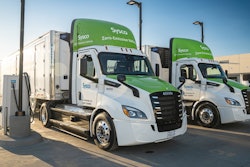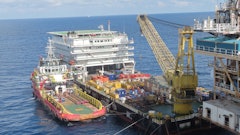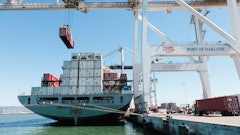
A nearshoring boom is underway, triggered by persistent supply chain disruptions and geopolitical dynamics, plus rising costs worldwide. As U.S. companies look for ways to bring offshore operations closer to home, Mexico tops the list. Financial markets recognize the opportunity; investors looking to cash in on the uptick in nearshoring are buying stock in Mexican real estate firms, transportation companies and banks.
Mexico is a great option for U.S.-based companies for several reasons. Its proximity means time zones match the Southwestern United States, which syncs more closely with domestic operations than Asian or European operations do, even for companies in the Eastern time zone.
Geographical closeness also makes it easier for U.S. headquarters to conduct staff training and handle quality control. Mexico is also better aligned culturally with the United States than countries in Asia or Europe. That said, if you’re interested in joining the nearshoring boom by opening an operational facility in Mexico, be prepared to address infrastructure, language and cultural differences and address the unique logistics challenges.
Nearshoring’s cross-border logistics impact
The arrival of large manufacturing operations is prompting freight carriers to expand their presence in the region. As the nearshoring trend accelerates, it will increase trade between the United States and Mexico significantly, impacting freight capacity. Freight brokerage companies that specialize in cross-border logistics are already seeing an influx of new customers.
As companies that are new to nearshoring seek logistics services to move a wide range of products, including food and beverage items, they are primarily focused on three aspects of cross-border logistics: price, service and complexity. Here’s a look at each of those factors.
Price. A generation ago, companies moved operations offshore to save money. Now cost is driving the nearshoring trend, but organizations are especially budget conscious due to economic uncertainty. So for some, price is the most important factor they weigh when considering logistics options. Many decision-makers feel like they’re spending too much to move freight over the border, a perception that is often based in part on an incomplete understanding of the complexity involved.
Service. Service levels are the most important consideration for some companies looking for cross-border logistics options, and it’s particularly relevant if you need cold storage logistics to move produce and other food items. Delays can be a disaster if perishable items spoil or expire in transit, and food and beverage companies need to know they can rely on their carrier to maintain optimal temperatures. Service is also a top concern for supplier organizations that have strict service-level agreements with their customers. They are willing to pay a premium to ensure on-time delivery.
Complexity. Because the United States and Mexico share a long land border, some assume the same truck can carry a load from its point of origin to the destination, but it’s more complicated than that. There are logistical and cultural challenges that have to be addressed. A typical scenario for a load traveling from Mexico to the United States involves multiple parties, including a Mexican carrier that transports freight to the border, a border drayage service that takes it through customs and drops it off at a transit facility on the U.S. side and a U.S. carrier that transports the freight to the final destination.
Relationships matter in cross-border logistics
If you’re opening an operation facility in Mexico, you’ll weigh price and service to choose the cross-border logistics option that best fits your business priorities, but complexity is a factor that can directly affect price and service if not handled correctly. Inaccurate freight paperwork can cause delays due to load rejection and cost money if operations at the destination are idled while you wait for the goods.
An incomplete trailer number on a form, for example, can trigger rejection at the border, and an incorrect pallet count can raise suspicion with customs officials, perhaps even endangering the carrier’s Customs Trade Partnership Against Terrorism (CTPAT) certification. That’s why it’s important to work with a logistics broker that has integrated technology purpose-built to manage cross-border freight data and relationships on both sides of the border to smooth the way if problems arise.
The best advice for companies opening operations using a nearshore model is to find a tech-enabled freight broker with experience moving goods between Mexico and the United States and that has contacts in place in both countries to facilitate cross-border hauling services. The nearshoring boom is here, and if your company makes the move with these assets in place, you can avoid losing time or money as you bring operations closer to home.





















